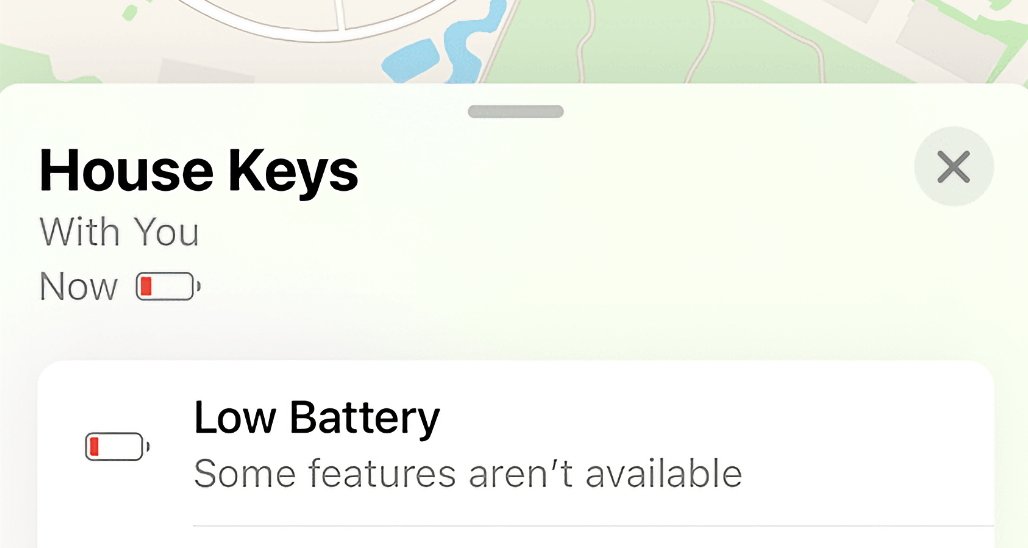You can no longer check the battery level in your AirTags whenever you want, but there are things you can — and should — do to make sure they don't die on you unexpectedly.
This could be the shortest guide in the history of Apple. For the answer to how you check your AirTags battery level is that you can't.
It's not that Apple has made a chance for the forthcoming iOS 16, it is that it has also changed iOS 15. Previously you could open the Find My app, tap on a named AirTag and see a battery icon.
That was solely an icon, there was no way to get a percentage figure of the battery life remaining. So it was always an approximation, but still if you saw the battery was about three quarters full, you were fine.
Except perhaps you weren't.
Apple hasn't commented on why it has removed the battery indicator, but one possibility is that for some reason it was unreliable. AppleInsider AirTag users have had their iPhones show a low battery warning, for instance, only to then see about a 50% charge according to the Find My app.
What Apple recommends now
Really, Apple's advice now in its updated support documentation is that you should leave well alone. Ignore your AirTags — until such time as your iPhone pops up a low battery warning.
If you somehow miss that notification, you can go in to the Find My app and tap on the named AirTag. Once you've had that low battery warning notification — and only once you've had it — you will now also have the old battery icon back in Find My.
It will be showing you a very little charge and, really, it's pointless.
That icon exclusively appears if you've had the notification, and it's rather more likely that you'll spot that warning than it is that you'll suddenly elect to look for the return of a battery icon in Find My.
Plus the icon is still solely an image without any percentage figure. Neither it nor the warning notification has an actual figure, or any possible clue about how much time you've got left with this battery. The warning just says you should replace the battery "soon."
There may be some more information when you go into Find My, but it's not useful. "Low Battery," it can say. "Some features aren't available."
It doesn't say what those features are, nor does Apple's support documentation clarify the issue. But since AirTags do pretty much one job, it's fair to assume you want them to have all of their features available.
What AppleInsider recommends most of the time
Apple seems to have been about right in its estimate that an AirTag battery will last a year. It obviously varies depending on how much time you spend looking for the AirTag, but a year appears to be about what most people will typically get.
So regardless of whether you've had the warning notification or not, plan to replace the battery one year after you got it. Or rather, since you don't want to waste batteries, buy a new battery pack when the 12 months are coming to an end, and keep it with you until you get the warning.
It may take you a minute to remember when you bought the AirTag. But at least for the future, you can use Siri to remind you to buy the next battery in, say, 11 months from now.
Whenever you do buy a new battery, though, it has to be the right one. That sounds obvious, since you're never going to wedge an AA battery into an AirTag, but there's a little more to it than just the physical size.
First, the battery must be a CR2032 one. But then secondly, they shouldn't be CR2032 ones that come with what's called a bitterant coating.
That coating is used to put children off swallowing the little batteries. However, that same bitterant coating can prevent proper contact with the AirTag's battery contacts.
There are exceptions
Since Apple will not say how much time you get between the warning and the battery dying completely, assume the worst. And especially so when you are about to go on a trip.
So yes, buy a battery and have it available as the end of the AirTag's year-long life nears, but also fit it early if you're about to go away.
For all you know, you've got a couple of weeks left in the battery, but there is no way to check. And AirTags have proven to be so useful, especially tracking wandering luggage, that it would now be galling to have one, yet to have let it die, too.
 William Gallagher
William Gallagher









 Marko Zivkovic
Marko Zivkovic
 Christine McKee
Christine McKee
 Andrew Orr
Andrew Orr
 Andrew O'Hara
Andrew O'Hara


 Mike Wuerthele
Mike Wuerthele
 Bon Adamson
Bon Adamson




-m.jpg)


